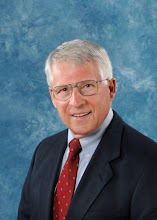Two questions that we are hearing more and more are:
1) Why does the country need a community resilience framework?
2) Why should we work on developing one now?
There are several trends that point to the need for a framework.
THE GROWING COMPLEXITY OF COMMUNITIES. American communities today are much more complex than ever before, and becoming more so. Almost all communities are enmeshed in a complex web of interdependencies, both within the community and with other communities. A framework can help citizens, community leaders and state and federal entities better understand the nature of each community. In times of disaster, this understanding is essential for obtaining resources and maximizing their impact.
THE NEW SPECTRUM OF HAZARDS FACING COMMUNITIES. American communities have always been at risk from natural hazards and pandemics. However, growing community complexity and the rise of global terrorism have brought new vulnerabilities. A framework can help communities to better understand these vulnerabilities, and to take action to limit impacts.
THE ACCELERATING RATE OF CHANGE. In prior times, communities often could adapt to emerging trends and new hazards at their own pace. In today’s techno centric world, the accelerating rate of technological change means that communities are almost continually faced with the need to adapt – or re-invent – themselves. A framework can point out the paths a community can follow to successfully adapt to change.
We believe it is essential to develop a community resilience framework NOW.
IMPACTS OF RECESSION. The global recession has severely limited the resources that communities, states, and the federal government have available to help communities recover from disasters. National economic recovery will be protracted, with no guarantee of complete success. This means that communities must identify the resources they might need to meet future disasters – now, or risk compaction or collapse.
UNREALISTIC EXPECTATIONS. In the aftermath of 9/11, and especially after Hurricane Katrina, a large portion of the populace seems to believe that the federal government should and can be the “White Knight” that charges in after a disaster and returns the community to normalcy. Quite simply, the federal government doesn’t have the resources to repeat Katrina (currently $230 B and counting). In order to fully recover from future disasters, communities and their citizens must be ready to take charge of their own recovery. They must identify all of the resources that will be available for recovery – those within the community and outside, and prepare to use them if disaster strikes.
In the next few postings, I’ll expand on each of these.

No comments:
Post a Comment